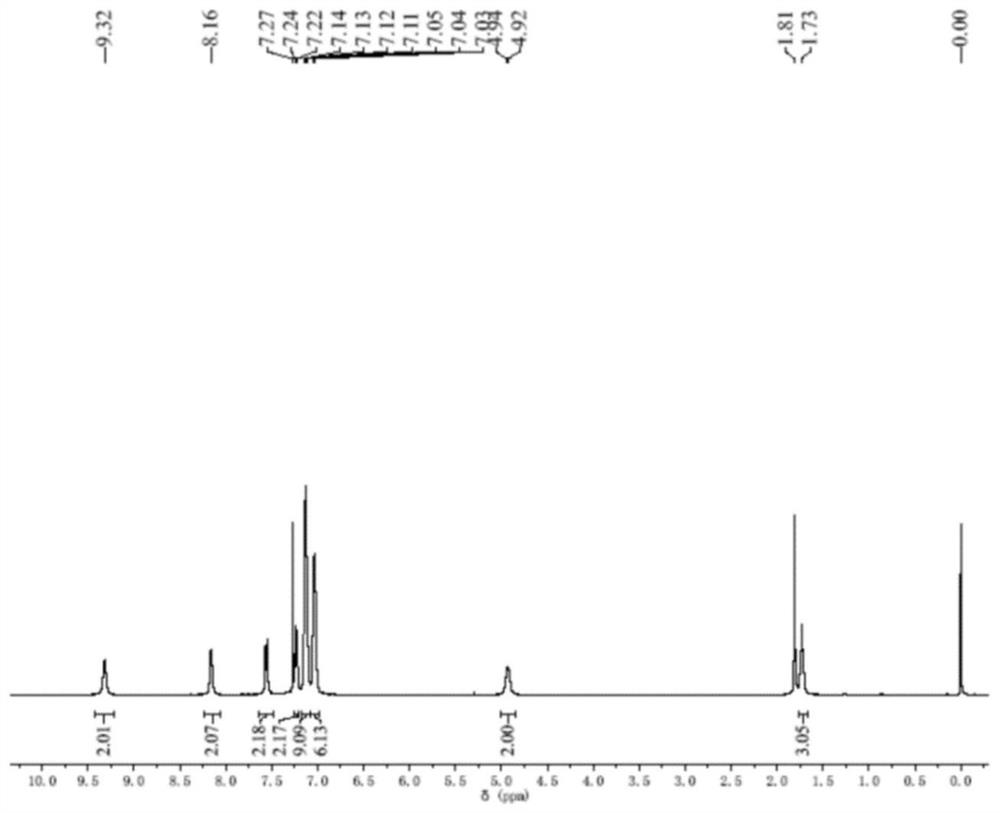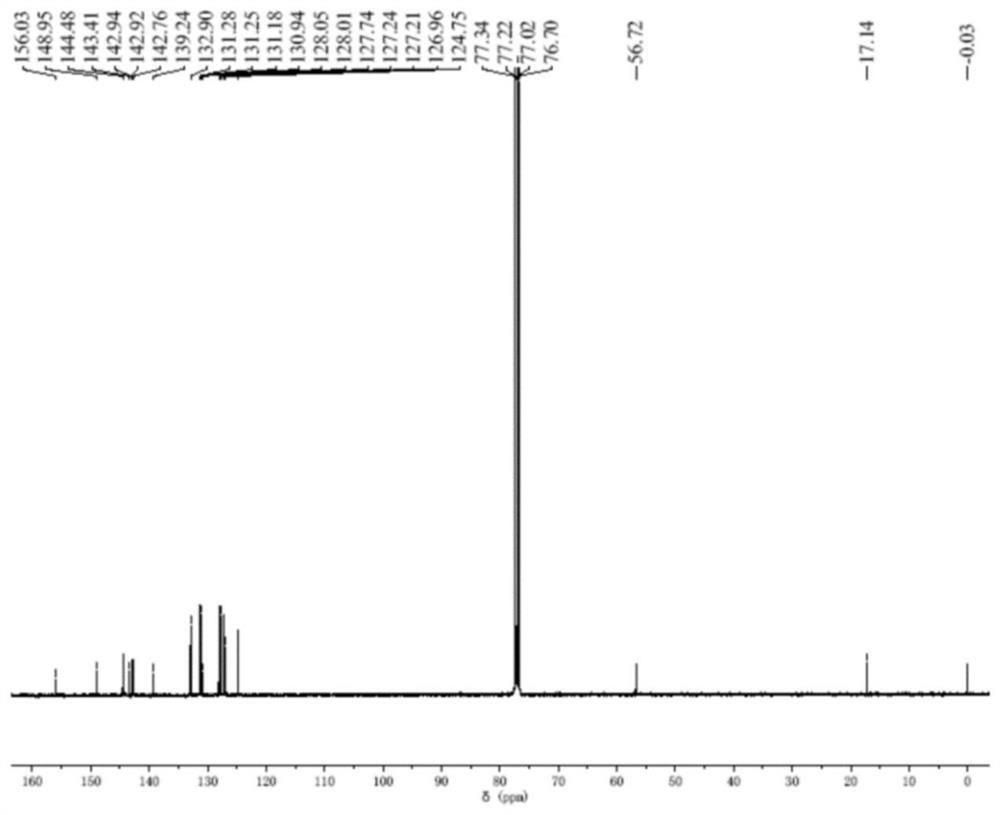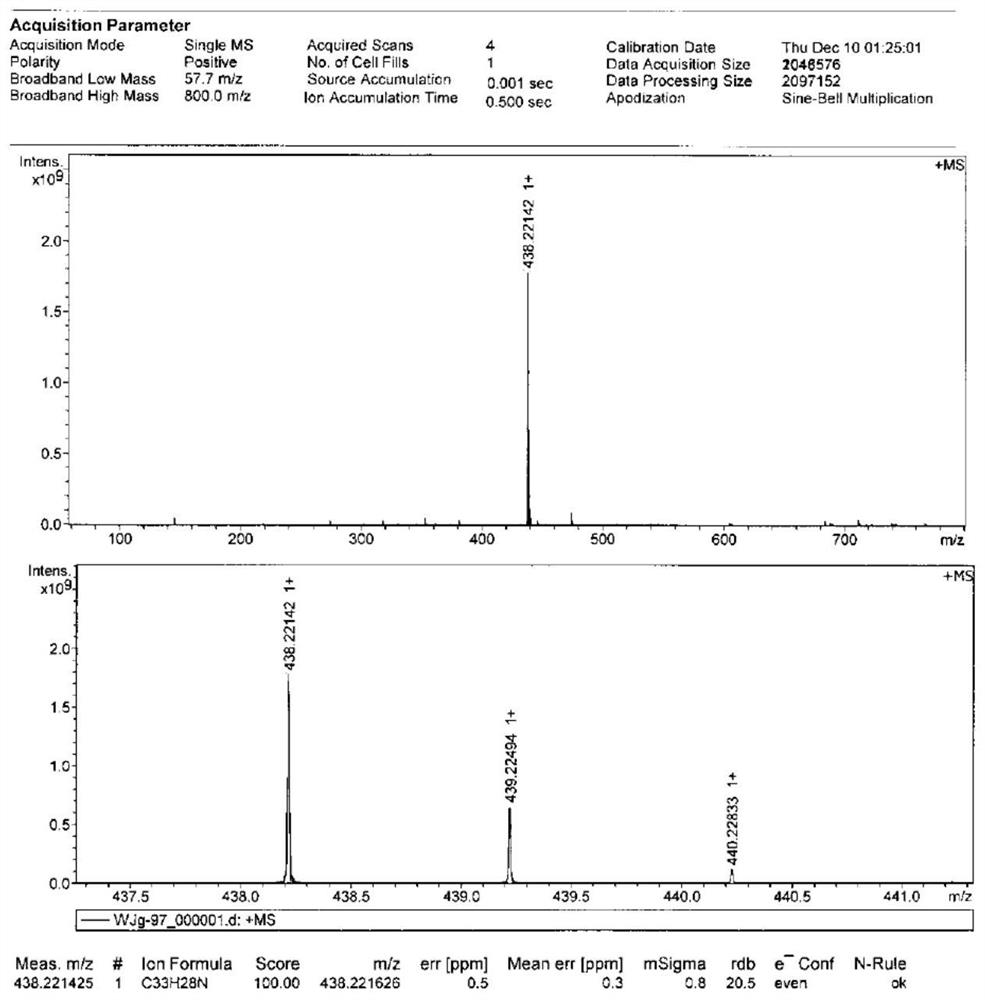Fluorescent probe compound and its preparation method and its application and method for detecting endotoxin
A fluorescent probe and endotoxin technology, applied in the field of endotoxin detection, can solve the problems of fluorescence enhancement, fluorescent probe can only be used in glucose injection, HEPES buffer, ultrapure water or other non-containing, false positive, etc. , to achieve the effects of clear fluorescence curve, easy promotion and convenient operation
- Summary
- Abstract
- Description
- Claims
- Application Information
AI Technical Summary
Problems solved by technology
Method used
Image
Examples
Embodiment 1
[0069] A kind of fluorescent probe compound, fluorescent probe compound is (TPEPyE), molecular formula is C 33 h 28 NI, the structural formula is:
[0070]
[0071] The preparation method of fluorescent probe compound comprises the following steps:
[0072] S1. Add 3.7g (22mmol) diphenylmethane (1) into a 250mL two-necked flask; vacuumize the two-necked flask and then fill it with nitrogen, repeat three times; inject 40mL of anhydrous tetrahydrofuran (THF); The system was cooled to 0°C, and then 13.75mL (22mmol) n-butyllithium (1.6M) was added dropwise, and the reaction solution turned red; after stirring for 1 hour at 0°C (other embodiments can be made at 1°C, 2°C, 3 ℃, 4 ℃ under stirring for 1 hour), 5.222g (20mmol) 4-bromobenzophenone (2) was dissolved in 10mLTHF, and then slowly added dropwise to the reaction system; the reaction mixture was naturally warmed to room temperature and continued to react 10 hours. After the reaction is over, use saturated ammonium chlor...
Embodiment 2
[0081] In this embodiment, the solution to be tested is: a positive sample to be tested with a concentration of 0.9% sodium chloride injection with an endotoxin content of 0.75EU / mL and a concentration of 0.9% sodium chloride injection with an endotoxin content of 0.1EU / mL of negative test samples.
[0082] A kind of method utilizing the fluorescent probe compound detection concentration among the embodiment 1 to be the endotoxin content in the sodium chloride injection of 0.9%, comprises the following steps:
[0083] (1) Dissolve the fluorescent probe compound in pyrogen-free water to prepare a storage solution, specifically: take 1.1 mg of the fluorescent probe compound TPEPyE, pour it into a 25 mL volumetric flask, add pyrogen-free water to the volumetric flask to constant volume, Vibrate on a vortex shaker for 30 s to fully dissolve TPEPyE, and prepare a TPEPyE solution with a concentration of 100 μM, which is the storage solution.
[0084] (2) Preparation of standard solu...
Embodiment 3
[0102] In this embodiment, the solution to be tested is: a positive test sample with a concentration of 5% glucose injection with an endotoxin content of 0.75EU / mL and a negative sample with a concentration of 5% glucose injection with an endotoxin content of 0.1EU / mL. Sample to be tested.
[0103] A kind of method utilizing the fluorescent probe compound detection concentration among the embodiment 1 to be the endotoxin content in the glucose injection of 5%, comprises the following steps:
[0104] (1) Dissolve the fluorescent probe compound in pyrogen-free water to prepare a storage solution, specifically: take 1.65 mg of the fluorescent probe compound TPEPyE, pour it into a 25 mL volumetric flask, add pyrogen-free water to the volumetric flask to constant volume, Vibrate on a vortex shaker for 30 s to fully dissolve TPEPyE to prepare a TPEPyE solution with a concentration of 150 μM, which is the storage solution.
[0105] (2) Preparation of standard solution:
[0106] Tak...
PUM
 Login to View More
Login to View More Abstract
Description
Claims
Application Information
 Login to View More
Login to View More - R&D Engineer
- R&D Manager
- IP Professional
- Industry Leading Data Capabilities
- Powerful AI technology
- Patent DNA Extraction
Browse by: Latest US Patents, China's latest patents, Technical Efficacy Thesaurus, Application Domain, Technology Topic, Popular Technical Reports.
© 2024 PatSnap. All rights reserved.Legal|Privacy policy|Modern Slavery Act Transparency Statement|Sitemap|About US| Contact US: help@patsnap.com










